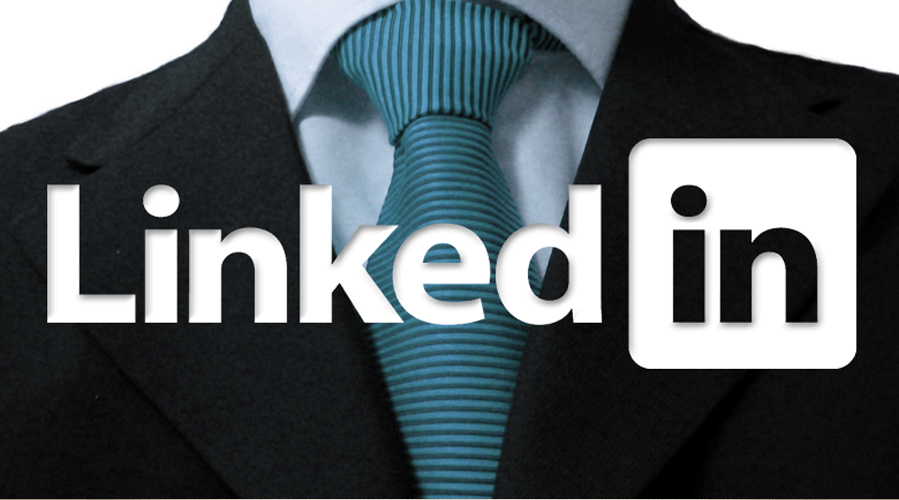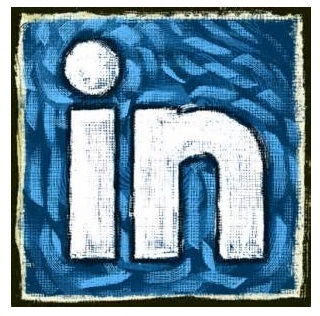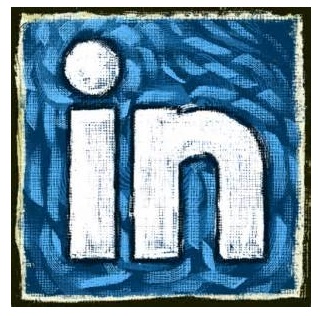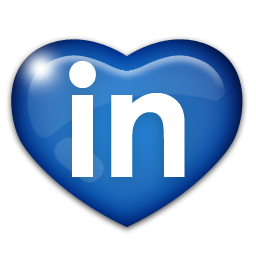
by Fronetics | Jun 4, 2015 | Blog, Marketing, Social Media, Strategy

When thinking about where to focus your company’s social media presence, look at the numbers. LinkedIn generates 80% of B2B social media leads, more than Facebook, Twitter, and Google+ combined. A 2013 study conducted by Demo and CEO.com shared that “LinkedIn remains the one social media platform that is actually more popular with CEOs than the general public.” Why are company higher-ups turning to LinkedIn, the top professional social media platform?
LinkedIn currently has more than 350 million users, from over 200 countries and territories, and sees 2 new members added each second. A good amount of people, 40%, check LinkedIn daily. With these impressive numbers and LinkedIn’s goal of reaching 3 billion users, a company profile is bound to get traffic, especially if the company is utilizing the publishing format to share ideas and situate itself as a leading voice in the industry.
Your own employees, current and former, most likely have their own LinkedIn profile. They list their education, and of course, their work history. If your company does not have a LinkedIn page, there will be no logo to click on, no link, no exposure for you, and perhaps a loss of credibility. In today’s tech-savvy world, being engaged in social media platforms has come to be the norm for individuals and companies. People spend 1.72 hours on social media a day; let them find you easily during that time.
Leads:
With LinkedIn being the top social media site to generate leads, why not highlight your company there? Unlike Facebook, you have the ability to see who is looking at your company’s profile, and now, with LinkedIn’s newest analytics service, users can see who has been viewing their posts. Users can also see how many people liked and shared a post, and see more detail into demographics such as viewers’ industry, location, and job titles. By understanding who is looking at your company’s page or posts, you can see which demographic you’re reaching, and which you’re missing. You can reach out to those who show repeated interest and try to find ways to tailor future content to attract the people you’re not reaching.
Credibility:
Let your former and current clients and partners advertise your expertise for you. With the “recommendations” and “endorsements” features others can help build your level of trust with potential leads.
Coaches, consultants and recruiters also comb through LinkedIn looking for company matches for their clients. According to Executive Coach and Consultant, Stephenie Girard, “I rely on companies to use LinkedIn to increase their credibility, attract quality talent and expose their product or professional services. When organizations utilize LinkedIn in full capacity we gain access to the company’s values, culture, people and products – all of which are crucial pieces to the puzzle when matching a potential employee to employer.”
Connections:
Finding leads directly might be on your mind, but finding other business people and businesses that you can follow, monitor, learn from, and partner with, can also be incredibly valuable and may, in the end, bring you some leads and great business allies.
Once you have the connections made on LinkedIn, stay in touch with your old and new connections, clients, and customers. Many companies use LinkedIn as another platform to share press releases, white papers, videos, and product announcements.
According to Business Insider article LinkedIn May Not Be the Coolest Social Network, but It’s Only Becoming More Valuable to Businesses, “LinkedIn has the advantage of being the place for white-collar professionals to network, meaning its population is highly desirable since it is a high-income and highly educated user base.” Is LinkedIn right for you? If you’re looking for intelligent professionals, perhaps it is.

by Fronetics | Dec 30, 2014 | Blog, Logistics, Manufacturing & Distribution, Marketing, Social Media, Strategy, Supply Chain
 I wrote a guest blog for freight logistics company Cerasis in October which discussed how companies within the manufacturing, supply chain, logistics, and industrial industries can increase their B2B visibility on LinkedIn.
I wrote a guest blog for freight logistics company Cerasis in October which discussed how companies within the manufacturing, supply chain, logistics, and industrial industries can increase their B2B visibility on LinkedIn.
The catalyst for writing the blog were results from a recent survey focused on the supply chain and logistics industry. 58% of respondents rated LinkedIn as “very impactful,” and 37% rated LinkedIn as “somewhat impactful.” At the same time, respondents reported challenges associated with strategy (33%) and a lack of understanding about the application of social media (24%).
Leveraging LinkedIn
There are over 3 million LinkedIn company pages. Being present on LinkedIn is critical, but is not enough. To maximize your LinkedIn presence you need to take steps to increase your B2B visibility. Here’s how:
-
Create a compelling company page
Your company page is an extension of your company. Make sure that the page is compelling, informative, and presents your company as a leader within the industry.
-
Be active
In addition to keeping your company page up-to-date, you need to be active on LinkedIn on a daily basis. LinkedIn groups are great. Actively participating in LinkedIn groups will allow your company to: 1) gain business and market intelligence; 2) introduce you to new, interesting, and relevant topics; 3) help you increase brand awareness; and 4) position your company as an industry leader.
-
Distribute content
If you want your content to be seen you need to get it out there; you need to distribute your content. Distribute your content and curated content via your company page and (when relevant) within the LinkedIn groups to which you belong.
-
Employee engagement
Your employees are your brand ambassadors. Empower your employees to be active within LinkedIn groups as representatives of your company. Encourage employees to share your content and industry content with their connections. Additionally, encourage employees to share open positions with their LinkedIn connections, and to identify great talent within their network.
-
Prospect for leads
LinkedIn is an effective prospecting tool. Use LinkedIn to prospect for leads and to build your sales pipeline.
-
Optimize your profile
Every employee is a reflection of the company. Encourage employees to optimize their personal LinkedIn profiles.
-
Don’t be annoying
You will fail if you take a “me, me, me attitude.” Constantly self-promoting is bad for business.
If your company is not using LinkedIn you are missing out on opportunities and revenue.

by Fronetics | Dec 30, 2014 | Blog, Logistics, Manufacturing & Distribution, Marketing, Social Media, Strategy, Supply Chain
 I wrote a guest blog for freight logistics company Cerasis in October which discussed how companies within the manufacturing, supply chain, logistics, and industrial industries can increase their B2B visibility on LinkedIn.
I wrote a guest blog for freight logistics company Cerasis in October which discussed how companies within the manufacturing, supply chain, logistics, and industrial industries can increase their B2B visibility on LinkedIn.
The catalyst for writing the blog were results from a recent survey focused on the supply chain and logistics industry. 58% of respondents rated LinkedIn as “very impactful,” and 37% rated LinkedIn as “somewhat impactful.” At the same time, respondents reported challenges associated with strategy (33%) and a lack of understanding about the application of social media (24%).
Leveraging LinkedIn
There are over 3 million LinkedIn company pages. Being present on LinkedIn is critical, but is not enough. To maximize your LinkedIn presence you need to take steps to increase your B2B visibility. Here’s how:
-
Create a compelling company page
Your company page is an extension of your company. Make sure that the page is compelling, informative, and presents your company as a leader within the industry.
-
Be active
In addition to keeping your company page up-to-date, you need to be active on LinkedIn on a daily basis. LinkedIn groups are great. Actively participating in LinkedIn groups will allow your company to: 1) gain business and market intelligence; 2) introduce you to new, interesting, and relevant topics; 3) help you increase brand awareness; and 4) position your company as an industry leader.
-
Distribute content
If you want your content to be seen you need to get it out there; you need to distribute your content. Distribute your content and curated content via your company page and (when relevant) within the LinkedIn groups to which you belong.
-
Employee engagement
Your employees are your brand ambassadors. Empower your employees to be active within LinkedIn groups as representatives of your company. Encourage employees to share your content and industry content with their connections. Additionally, encourage employees to share open positions with their LinkedIn connections, and to identify great talent within their network.
-
Prospect for leads
LinkedIn is an effective prospecting tool. Use LinkedIn to prospect for leads and to build your sales pipeline.
-
Optimize your profile
Every employee is a reflection of the company. Encourage employees to optimize their personal LinkedIn profiles.
-
Don’t be annoying
You will fail if you take a “me, me, me attitude.” Constantly self-promoting is bad for business.
If your company is not using LinkedIn you are missing out on opportunities and revenue.

by Fronetics | Dec 24, 2014 | Blog, Marketing, Social Media, Talent
 LinkedIn is the largest social network for professionals. There are more than 332 million users – and this number is growing rapidly. An average of 2 users joins LinkedIn every second.
LinkedIn is the largest social network for professionals. There are more than 332 million users – and this number is growing rapidly. An average of 2 users joins LinkedIn every second.
There is the perception that LinkedIn is only for job seekers, and that a red flag will be raised if those who are employed update their profile. Neither is accurate.
Here are 6 reasons you need to be on LinkedIn even though you have a job:
Your personal brand matters
People are looking at your LinkedIn profile to learn more about you. And it isn’t just recruiters or potential employers looking on LinkedIn. Clients, colleagues, and even your current employer look to your LinkedIn for information on who you are, what you have done, and what you do.
Because your personal brand matters, take the time to optimize your LinkedIn profile.
Network, network, network
Networking is often thought of as a (dreaded) job search action item. However, thinking about networking in this manner will leave you at a disadvantage. Networking is an action item necessary for your professional and personal growth.
LinkedIn is an incredible network building tool. Leverage it and “Network your face off.”
Industry groups
Being involved in relevant LinkedIn groups will help you grow your network. It will also help you stay up-to-date on what is happening within your industry, and give you the opportunity to get involved in the conversation.
News
Company and individuals are posting content, and having conversations on LinkedIn every day. These conversations and the content posted are chock full of relevant news.
Be a brand ambassador
Is your company hiring? Share the posting with your connections. Also, take the time to look through your connections; is there anyone who might be a good fit for the position? If so, reach out to them. Bonus: your company may compensate you for referring a candidate if they are hired.
Opportunities
You may not be looking for a new position, but what if the perfect position fell into your lap? If you are active on LinkedIn and have optimized your profile, you may find that people begin reaching out to you and present you with opportunities.
Have a job? Be active on LinkedIn. Not being active is more likely to raise a red flag.

by Fronetics | Dec 24, 2014 | Blog, Marketing, Social Media, Talent
 LinkedIn is the largest social network for professionals. There are more than 332 million users – and this number is growing rapidly. An average of 2 users joins LinkedIn every second.
LinkedIn is the largest social network for professionals. There are more than 332 million users – and this number is growing rapidly. An average of 2 users joins LinkedIn every second.
There is the perception that LinkedIn is only for job seekers, and that a red flag will be raised if those who are employed update their profile. Neither is accurate.
Here are 6 reasons you need to be on LinkedIn even though you have a job:
Your personal brand matters
People are looking at your LinkedIn profile to learn more about you. And it isn’t just recruiters or potential employers looking on LinkedIn. Clients, colleagues, and even your current employer look to your LinkedIn for information on who you are, what you have done, and what you do.
Because your personal brand matters, take the time to optimize your LinkedIn profile.
Network, network, network
Networking is often thought of as a (dreaded) job search action item. However, thinking about networking in this manner will leave you at a disadvantage. Networking is an action item necessary for your professional and personal growth.
LinkedIn is an incredible network building tool. Leverage it and “Network your face off.”
Industry groups
Being involved in relevant LinkedIn groups will help you grow your network. It will also help you stay up-to-date on what is happening within your industry, and give you the opportunity to get involved in the conversation.
News
Company and individuals are posting content, and having conversations on LinkedIn every day. These conversations and the content posted are chock full of relevant news.
Be a brand ambassador
Is your company hiring? Share the posting with your connections. Also, take the time to look through your connections; is there anyone who might be a good fit for the position? If so, reach out to them. Bonus: your company may compensate you for referring a candidate if they are hired.
Opportunities
You may not be looking for a new position, but what if the perfect position fell into your lap? If you are active on LinkedIn and have optimized your profile, you may find that people begin reaching out to you and present you with opportunities.
Have a job? Be active on LinkedIn. Not being active is more likely to raise a red flag.




